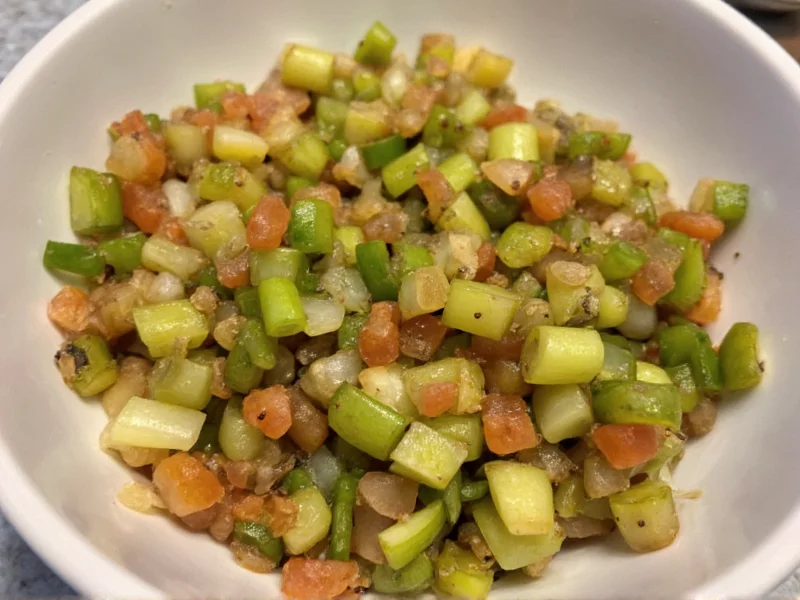Pepper onion relish—a vibrant blend of finely chopped bell peppers, onions, vinegar, sugar, and spices—serves as a kitchen powerhouse for elevating everyday meals. Unlike basic ketchup or mustard, this relish delivers complex sweet, tangy, and slightly spicy notes that cut through rich flavors while adding textural contrast. Home cooks and professional chefs alike rely on its ability to transform simple ingredients into restaurant-quality dishes with minimal effort.
What Makes Pepper Onion Relish Special
Unlike single-ingredient condiments, pepper onion relish combines the natural sweetness of caramelized onions with the bright acidity of vinegar-pickled peppers. The balance of sugar and vinegar creates a flavor profile that complements both hearty meats and delicate seafood. Most commercial varieties use a mix of red, yellow, and green peppers for visual appeal and nuanced taste, while homemade versions often incorporate jalapeños for heat.
Top Culinary Applications
Understanding how to use pepper onion relish in cooking unlocks its full potential. The following table outlines proven applications across meal categories:
| Meal Category | Specific Uses | Pro Tips |
|---|---|---|
| Burgers & Sandwiches | Classic topping for beef burgers, turkey burgers, pulled pork sandwiches | Apply chilled relish to hot patties for temperature contrast |
| Grilled Meats | Glaze for ribs, finishing sauce for grilled chicken, marinade base | Mix with equal parts BBQ sauce for balanced sweetness |
| Seafood Dishes | Fish taco topping, crab cake accompaniment, shrimp skewer sauce | Add lime zest to relish for coastal flavor pairing |
| Vegetarian Options | Black bean burger topping, roasted vegetable garnish, hummus mixer | Stir into quinoa salad for instant flavor boost |
| Breakfast Items | Omelet filling, breakfast sandwich spread, avocado toast topping | Drain excess liquid before adding to eggs |
Creative Recipe Integrations
For those exploring pepper onion relish recipe ideas, consider these chef-tested applications:
- Cheesy Relish Dip: Combine ½ cup relish with 8oz softened cream cheese and ¼ cup shredded cheddar. Chill for 2 hours before serving with crackers or vegetable sticks.
- Relish-Infused Mayo: Mix 3 tablespoons relish into 1 cup mayonnaise for sandwiches or as a fry dipping sauce.
- Potato Salad Upgrade: Replace half the pickle relish in your recipe with pepper onion relish for deeper flavor complexity.
- Quick Pizza Base: Spread thin layer on pizza crust before adding cheese—works especially well with sausage or pepperoni pizzas.
Flavor Pairing Principles
Successful use of what to serve with pepper onion relish depends on understanding flavor chemistry. The vinegar content makes it ideal for cutting through fatty foods like pulled pork or brisket. Its sweetness balances spicy elements in dishes like buffalo chicken wraps. When incorporating relish into recipes, remember these pairing rules:
- Pair with proteins that benefit from acid—pork, chicken, and oily fish like salmon
- Use as counterpoint to rich cheeses like brie or blue cheese
- Avoid combining with already-sweet sauces to prevent flavor imbalance
- Drain excess liquid when using in baked dishes to prevent sogginess
Storage and Shelf Life Guidance
Proper storage maintains pepper onion relish for burgers and other applications. Unopened commercial jars last 12-18 months in pantry. After opening, refrigerate and use within 3 months. Homemade versions with no preservatives should be consumed within 2 weeks. Always use clean utensils to prevent contamination—never double-dip. For extended storage, freeze in ice cube trays then transfer to airtight containers (keeps 6 months).
Homemade vs. Store-Bought Considerations
While commercial pepper onion relish substitution ideas work well for quick meals, homemade versions offer customization. Basic recipe: Combine 2 cups diced peppers, 1 cup diced onions, ½ cup vinegar, ¼ cup sugar, 1 tsp salt, and ½ tsp mustard seed. Simmer 20 minutes until thickened. Customize by adding:
- Smoked paprika for barbecue applications
- Minced garlic for Mediterranean dishes
- Apple cider vinegar instead of white for fruitier notes
- Reduced sugar for low-carb diets
Store-bought options provide convenience and consistent texture, while homemade allows control over ingredients and spice levels—ideal for specialty diets or specific recipe requirements.
Frequently Asked Questions
Can I use pepper onion relish as a pizza topping?
Yes, spread a thin layer on pizza crust before adding cheese. It works particularly well with meat-heavy pizzas like sausage or pepperoni, where its acidity cuts through the richness. Drain excess liquid first to prevent a soggy crust.
What's the best way to incorporate relish into meatloaf?
Mix ¼ cup relish directly into the meat mixture for flavor throughout, then spread additional relish on top during the last 15 minutes of baking. The vinegar content helps keep lean meats moist while adding complexity to the glaze.
How do I fix an overly sweet relish in my dish?
Balance excessive sweetness by adding acid—1 teaspoon of vinegar or lemon juice per cup of finished dish. For cooked dishes, a pinch of cayenne or black pepper can also counteract sweetness through flavor contrast without making the dish spicy.
Can pepper onion relish replace pickle relish in recipes?
Yes, but expect flavor differences. Pepper onion relish has sweeter, more complex notes than standard pickle relish. Use a 1:1 substitution in tuna/chicken salads, but reduce additional sugar in the recipe by 25% to maintain balance.
Does cooking change pepper onion relish's flavor profile?
Yes—heat mellows the vinegar sharpness and deepens sweetness. When using as a glaze or in cooked dishes, add it during the last 5-10 minutes of cooking to preserve its fresh character. Extended cooking creates a jam-like consistency ideal for sandwich spreads.











 浙公网安备
33010002000092号
浙公网安备
33010002000092号 浙B2-20120091-4
浙B2-20120091-4